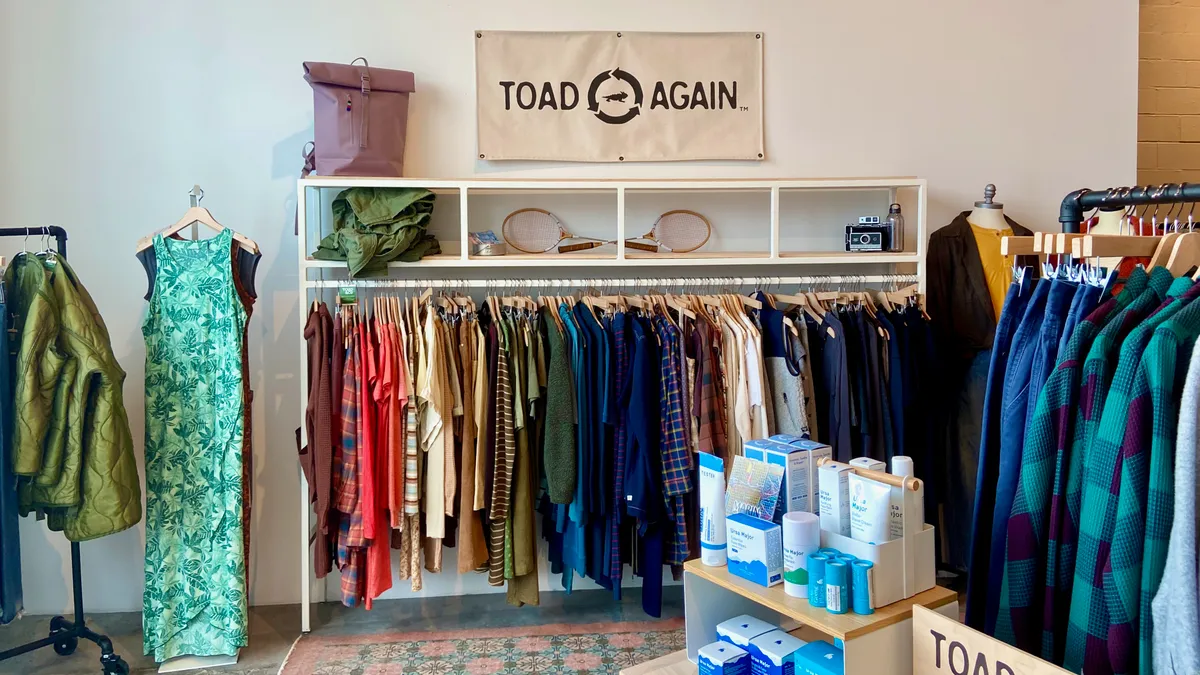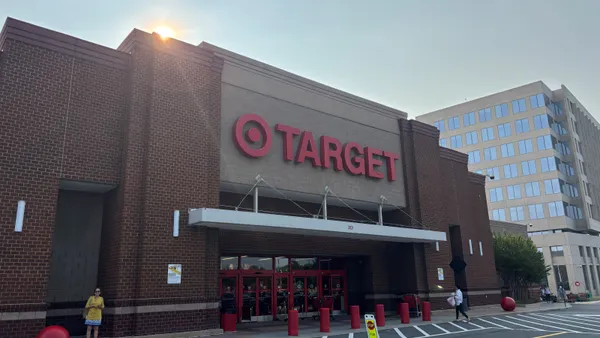With December only three months away, retailers are gearing up for the holidays and hoping for a good end to the year. While 2016 holiday sales were up, they were only slightly so, with online sales coming out on top and in-store foot traffic showing a slight decline.
According to Fung Global Retail & Technology, a retail think tank, that trend is expected to continue this year. Based on consumer feedback, Fung said 82% of its surveyed consumers expect to buy holiday gifts online this year, compared with 77% who anticipated buying gifts in physical stores. The research showed that this online/in-store gap peaks among younger age groups: 85% of holiday shoppers aged 30-44 years expected to shop online, which Fung attributes to the number of busy parents in this age group.
Fung's research also found that the internet trounced brick-and mortar, specifically among millennials and young families. Three-quarters of that group said they expected to buy holiday gifts from Amazon. That figure rose to 83% among those who planned to shop online and to as high as 90% among Amazon Prime members. Target and Walmart appear to be second- and third-tier destinations, respectively, with each set to attract just under half of holiday shoppers.
When it comes to Amazon Prime members, Fung said they under-index Walmart, suggesting the big-box retailer loses shoppers to Amazon when consumers become Prime members. In terms of age breakdown, Amazon, Target and T.J.Maxx were likely the top choices of millennials this holiday, with Walmart, Kohl’s and Costco seeing more older consumers.
Changing shopping habits
One positive change for 2017 is that consumers seem ready to spend again.
"Consumer sentiment regarding the 2017 holiday season is leaning towards the positive," Deborah Weinswig, Fung Global Retail & Technology's managing director, told Retail Dive. "In our August 26 report on the coming holiday season, we found that more Americans — 22.7% — say they will spend more this year compared with last year, while 21.3% said they’d spend less than they did last year." Most of the others (49.7%) said they would spend about the same.
"[Consumers] are telling us that quality is the most important consideration when they choose a shopping destination."

Deborah Weinswig
Managing Director, Fung Global Retail & Technology
Weinswig cautioned, though, that even with this sunny outlook, things are not yet ready to take off. Consumers said low prices and breadth of range are important factors when they're deciding where to shop for holiday gifts, but that price was not the most important factor. "That’s a marked change over some of the more difficult years we experienced post-crash," she said. "They are telling us that quality is the most important consideration when they choose a shopping destination."
That focus on quality over price may be yet another indication that consumers are feeling more bullish about spending this year than they have been in recent years. "As I look toward holiday retail this year, I see all signs pointing positive," Ryan Fisher, partner in the consumer and retail practice of A.T. Kearney, a global strategy and management consulting firm, told Retail Dive. "In our back-to-school study, we found that 40% of consumers were expected to spend more [this year] than the prior year ... These same consumers spending more on back to school will be spending more at holiday."
Online will win again
There's every indication that the majority of consumer spending will stay online.
Ben Smithee, CEO of The Smithee Group, a consumer consultancy specializing in millennial marketing, said that's as much a function of changing habits as anything. "I don't think that consumer desire to shop has ever been down, but I think how consumers shop has changed," he said. "... People are still shopping. They're just shopping online. As stores and brands start to adapt, they'll become more relevant."
"Retailers will be looking at bigger days later in the holiday shopping weeks, and the wait will make them nervous and more likely to promote."

Marshal Cohen
Chief Industry Analyst, NPD Group
Single-sale days may begin to lose relevance as a result. "People aren't trying to just cram everything into Black Friday anymore," he said.
This may prove nerve-wracking for brick-and-mortar retailers, especially if they can't count on a late-November payout. "Christmas falling on a Monday creates a shift in spending, as consumers will wait until the weekend to last-minute shop," Marshal Cohen, chief industry analyst at The NPD Group, a global market research firm, told Retail Dive. "This means retailers will be looking at bigger days later in the holiday shopping weeks, and the wait will make them nervous and more likely to promote."
Online sales will also be helped by an increase in mobile engagement, as more customers begin to make purchases on their phones. Fisher said A.T. Kearney expects to see increasing shifts to online channels, as retailer offerings advance and as there is greater consumer adoption.
Changing categories
This year will see changes not only in how consumers are shopping, but in what they're buying.
Cohen said one of the biggest challenges for retailers is the priority shift from tangibles to experiential, intangible spending — a shift he said began to take hold last year. In an October 2016 study by the NPD Group, 10% of customers reported buying fewer tangible gifts, 8% didn't plan to purchase any tangible gifts and 14% said they planned on buying more experiences than the year before.
The shift has impacted several retail categories, Cohen said. "Travel and experiences continue to grow in importance, and as they do, they shift both the sales on tangible gifts and the impulse buying on self-purchases," he said. "While it’s tempting to attribute this change to millennial shoppers, consumers across the generations are spending less on stuff, as evidenced by last year’s falling spend in luxury categories such as high-end jewelry, [which is] down 4%, and handbags, [which are] down 8%."
"[A]fter you see a lull, people want to get out there. It's called retail therapy for a reason. So I'm feeling bullish about holiday 2017."

Ben Smithee
CEO of The Smithee Group
This change may hit department stores hardest, since they're already struggling to find their audience. According to Cohen, though, brick-and-mortar may still have a late-season advantage in at least one category. NPD found that housewares and small appliance purchases were largely made in-store during Saturdays in December. In online shopping, by contrast, most of housewares and small appliance spending happened on Black Friday. Small appliances were especially popular with millennials, giving department stores a chance to make up for some of their holiday retail apparel losses.
One surprising category that Cohen expects to see growth in? Games and toys... for adults.
"Once again in 2017, I expect that the lack of new and innovative products will leave the holiday season lacking the excitement it needs to sparkle and create growth," Cohen said. "Last year, the adult games category experienced a 138% increase in velocity per item, [which was] twice as much as any other toy category, and a 24% year-over-year dollar growth. If anything speaks to the need for novelty, innovation — and, let’s face it, a few laughs — this does."
Overall, Cohen expects only about a 3% growth in sales for the holiday season. Smithee, on the other hand, was a little more optimistic.
"I think people want to spend money," he said. "We're still consumers and we want to spend money. [A]fter you see a lull, people want to get out there. It's called retail therapy for a reason. So I'm feeling bullish about holiday 2017."
This story is part of our ongoing coverage of the 2017 holiday shopping season. You can browse our holiday page and sign up for our holiday newsletter for more stories.


















